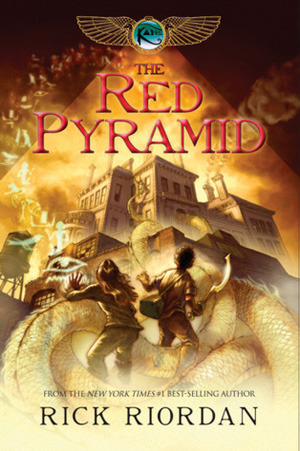Creating an inclusive classroom where rigorous critical thinking happens via candid speaking and focused listening, it goes without saying, is a tall order. And it’s not difficult to find experts who lament current barriers that prevent this, or, in contrast, to discover seasoned instructors who offer solid ideas that help teachers reach this end.
BARRIERS
Greg Lukianoff and Jonathan Haidt, as expressed in their 2015 essay “The Coddling of the American Mind” in The Atlantic, have a lot to say about the barriers that are inhibiting open expression and defenses-down listening on college campuses in the U.S. Targeting students as the cause of this mess, the writers sum up their thesis in the essay’s subtitle— In the name of emotional well-being, college students are increasingly demanding protection from words and ideas they don’t like, and seeking punishment of those who give even accidental offense. Here’s why that’s disastrous for education—and likely to worsen mental health on campus. Though this might strike the tone of an overzealous alarmist, Lukianoff and Haidt go on to cite specific lawsuits and scary brouhahas at many colleges across the country that speak to, what they say, is a “new climate” that is “slowly being institutionalized, and is affecting what can be said in the classroom, even as a basis for discussion.” The writers’ concerns, to reiterate, are founded in a sort of hyper-political correctness where everyone must think three-times before speaking, if choosing to speak at all, or suffer the consequences. Thus, as a result, they say many classrooms are devolving into tip-toe spaces where instructors gingerly create risk-free (i.e. dull) conversations—and those students who were hoping for some boat-rocking salsa instead get a Sesame Street version of debate and textual analysis. And as a result, apart from the immediate repercussion of creating a veritable snoozer of a classroom, this trend, the authors say, poorly prepares students for life after college “which often demands engagement with people and ideas one might find uncongenial or wrong.” The writers speak of terms that have become more familiar in the academic vernacular, such as microagressions—”small actions or word choices that seem on their face to have no malicious intent but are thought of as a kind of violence nonetheless”; trigger warnings—”alerts that professors are expected to issue if something in a course might cause a strong emotional response”; and vindictive protectiveness—a cultural movement in schools that “seeks to punish anyone who doesn’t think twice before speaking up, lest they face charges of insensitivity, aggression, or worse.”
Of course, these trends are tethered to the ongoing current culture wars and are highly politicized in nature. And in other ways, we are reminded that this tension, which seeks to find a balance between free speech and respect and positive energy in the classroom, is a tight wire that is not new. The effort to find ways to create classroom environments where every student feels welcomed and safe is, of course, paramount. But, I think what these writers are saying is that it’s possible for this well-intentioned aim to run amuck by creating a hyper-sensitive classroom where the free-exchange of ideas—a central goal of any academic institution—is somehow discouraged. That is, in the pursuit of creating safe spaces and a welcoming environment for 1st generation college students, veterans, disabled students, members of the LGBTQ community, athletes, members of a historically underserved group, [insert category here], we create classrooms where students are verbally clamming up, where crickets run rampant, and worse, where select students who maintain “vindictive protectiveness” are hatching plans to punish others. All of this, I’m convinced, brings us back to the aim of searching for balance—balance between freedom of expression and crossing a boundary of some sort. The trouble is, the boundaries, in many instances, are continually fluid and subjective.
THAT’S NOT FUNNY!
An interesting caveat to this conversation is another piece in The Atlantic by Caitlin Flanagan that comments on this development in another way. In “That’s Not Funny!” she discusses how, for many years, most stand-up comics have steered clear of bringing their act to campus social functions. Flanagan explains that almost every stripe of entertainer aggressively attempts to sell themselves on college circuits because the gigs are lucrative—”musicians, sword swallowers, unicyclists, magicians, hypnotists, slam poets, and every kind of boat act, inspirational speaker and one-trick pony.” So why do big comedians stay away? Countering the presumed assumption that college students are generally open-minded, Flanagan cites Chris Rock and Jerry Seinfeld who say colleges are “too conservative” “too PC” and that the aim of any social activities hiring committee was to not offend anybody. In one passage, Flanagan describes the stance of NACA, or the National Association for Campus Activities as wanting “comedy so thoroughly scrubbed of barb and aggression that if the most hypersensitive weirdo on campus mistakenly wandered into a performance, the words he would hear would fall on him like a soft rain, producing a gentle chuckle and encourage him to toddle back to his dorm, tuck himself in, and commence a dreamless sleep—not text Mom and Dad that some monster had upset him with a joke.”
While this perspective might be discouraging to many, it’s true that it only emphasizes one side of the story. One could cite numerous instances where students have been marginalized, harassed and abused by others in academia, not to mention the disturbing statistics tied to campus-related sexual assault, alcohol abuse, bullying, and suicide rates among veterans, and on and on. All of these serious realities only speak to the need for restraint, safety measures, Title 9 and common decency.
Depending on what side of the political fence you straddle, there, however, have been some notable strides in the area of affirming students. Last fall, for example, I read a piece in the LA Times Weekend Section by Nuran Alteir, titled “At local community colleges, transgender students’ names are now whatever they prefer”. The article details a recent change at Golden West College in Huntington Beach, CA where a transgender student who now identifies as being female effectively changed her birth-given name “Anthony Escobar” to what the college now acknowledges as “Athena Escobar”, respecting this student’s wishes. Of course, I imagine some readers might object and argue that this only serves as another example of a school district giving into the whims of, and effectively coddling, a student. But, on this controversial point, I would disagree.
AFFIRMATIVE LANGUAGE
The point is that these ongoing cantankerous social conundrums affect verbal expression in the classroom. How do you walk the tight wire of creating inclusion, support and respect and that of encouraging rigorous and intelligent expression that isn’t afraid of controversy? Here are some of the ideas I’ve largely stolen over the years from luminaries in the profession.
Teachers can encourage speaking and listening literacy skills by validating students in a number of ways. One way is to make a conscious effort to always use language that assumes success and to check your own biases. No matter who the student is, what his/her appearance or history is, use language that assumes that they will be successfully moving on to whatever upward rung stands before them. The skills in this class will benefit you when you transfer/take an upper-division course/are communicating with others in XYZ job. It might seem subtle, but you’ve planted the seed that you believe that student will succeed, and with that comes buy-in and risk taking and lowered anxiety.
I’ve also found that not shying away from those “courageous conversations” that might seem painfully uncomfortable in the moment is important in this pursuit, especially in the way of sticky discussions surrounding race. One key way to affirm equality and achieving equity in schools is to demonstrate a willingness to talk about sensitive matters that pertain to race. Alternatively, censoring these types of conversations can only serve to promote the problems surrounding issues such as the achievement gap, and the Black Lives Matter movement. Glenn Singleton talks at length about the crucial task of designing a plan to eliminate the achievement gap in his work Courageous Conversations About Race. One strategy, he argues, is to talk about the current events that relate to race, to talk about the rash of black men that are repeatedly being shot and killed by the police and the public outcry that is peppering cities across the country. Serve as a model of serious verbal expression, perhaps by reviewing a column in the newspaper and demonstrating reading comprehension strategies such as doing a think aloud; share prior knowledge or annotations, and most of all—share that you hear what the writing is saying and are able to restate it before moving on to personal reactions.
MARRIAGE PREP TRICKS
This practice of first mirroring what someone else has said is a core skill when it comes to encouraging students to express themselves openly. Because what this approach essentially is saying is this—before I jump in and give my own opinions, I am going to try to do an honest job of expressing what I’ve just read or heard. And the message is simple and affirming for others—without saying it directly, you are saying “Did I understand you correctly? This is what I think I heard you say.” This is actually a method, called the Speaker-Listener Technique, which I stole from a book I read when I was first got engaged years ago titled Fighting for Your Marriage and repurposed it for the classroom. Here’s the premise: Once you’ve reached that cliff, that rhetorical stalemate or conversational conflict of some sort, you utilize this technique. Your job is to listen first, not interrupt, and then mirror and finish by asking “Did I understand you correctly?” In short order, this is a strong blueprint or starting point if you seek to embark into dark waters of debate of any sort. It works because it is affirming—most often when people sense that they are at least being heard, they can turn down the emotion and are freed up to take the conversation to a more productive space.
FACE OFF
Say what you will about the edgy political rhetoric and media theatrics that led up to our new administration. One takeaway, however, is this—it’s never a good idea to use straw man tactics when squaring off with your opponent. This is another key lesson when it comes to the rules of speaking your mind clearly in the classroom, whether it be analyzing another writer or forming one’s own argument. To me, so much depends on how you treat your opponent. If one cannot give a fair representation of an opponent’s stance, then the argument quickly loses ground if it’s not outright dismissed. This comes back to the earlier point of honest representation versus the temptation to oversimplify and mock your opponent. In most arguments, the speaker, if he or she does their due diligence, stops to point out counterarguments, moves on to refutation and possibly makes a concession, and all along the way is citing experts, avoids logical fallacies, and is balancing strategies relating to ethos, logos and pathos—all of which serves to show that the writer/speaker is at least informed, balanced and possibly persuasive.
To me counterargument is where most fruitful discussions surrounding argumentation begins. Did the writer give his/her opponent an honest handshake before bringing out the big guns? Or was it all clatter without substance? Was the writer able to set aside the ear-muffs, the blinding lenses, and really able to accurately restate what the opponent said? And so goes the dance of what is so central to academic writing—accurately reproducing what someone else has said, and then moving on to respond. This pattern, again, speaks to the civil nature of mature debate—honestly mirroring what someone else has said and then responding, i.e., capturing another’s thoughts first and then reacting. And with this honesty comes a recognition of complexity—and that complexity usually ends up making yourself look good. Finally, a word about frustration and even anger. If a student discussion or debate creeps into gnarly territory, the challenge is not to discount or diffuse it, or run from conflict, but to channel or redirect that frustration into a medium that avoids potential abuse of another student. As writers, we all know that the gasoline of good writing can often begin with fire/strong emotion. The ultimate enemy is a passive, unengaged classroom.
MORE SPECIFICS
Supplying students with a diversity and inclusion statement either via the syllabus, on the wall in the room, or created through an interactive classroom norming poster activity helps to create an atmosphere where students can feel empowered to speak their mind in class and to anticipate disagreements. Other socially-based, student-centered activities that demand involvement are great starting points as well. Anonymous games that involve friendly competition are my favorite when it comes to helping students find the courage to talk. This might be a fishbowl activity where students share a question about a reading; a Kahoot! smartphone game that focuses on a reading; or a game I call Quote Sandwich Showdown, where students find a quote to support an assertion I share—and demonstrate the quote sandwich technique. Because it is anonymous (I have them include their avatar name that only I know), they decide who has written the best example, through a pair-up and pyramid-type method. Reading Circles with defined roles; speed-dating formatted discussions; structured class debates; and poster activities that ask students to identify problems passages, survival words, a “golden line”, and personal connections are all ways to get them talking and equally as important, to get you out of the way and work from a guide posture.
THE HUMOR IN IT ALL
In contrast to the barriers that Lukianoff and Haidt identify, humor is a crucial ingredient to building a cohesive and risk-taking classroom. Much documented research surrounds the benefits of humor in the classroom. Two works that include myriad ideas that are worth reviewing are Laugh and Learn by Doni Tamblyn and Using Humor to Maximize Learning—The Links Between Positive Emotions and Education by Mary Kay Morrison. In the context of helping students excel in the area of speaking and listening in the classroom and life in general, humor is paramount. If you’re familiar with all of the anxieties and fears that Rebecca Cox lays out in The College Fear Factor, then you know that you need an arsenal of strategies to lower the anxiety in the room, which is typically invisible, and to demonstrate empathy. Still, there are the skeptics who equate joking around with non-learning. This certainly can sometimes be the case and there are exceptions (I’m now imagining the middle school teacher reader who is thinking—are you kidding me? Eyes welling up with tears. I’m barely hanging on and you’re asking me to try to get them to laugh more?) but the research, by and large, proves otherwise. If you’re saying you’re not a gifted comedian, that’s not really what I, or these other researchers, are suggesting. Humor, in this context, is more closely aligned with an attitude of openness, creativity, self-deprecation and a positive state of mind.
One of the memorable passages of Laugh and Learn is the time Tamblyn devotes to discussing how humor has significantly changed DMV traffic school classes and safety announcements on flights for the better. The writer describes a flight experience on Southwest Airlines, settling in, reading a magazine, zoning out, and hearing what she thought would be the pre-flight announcement droning she’s heard countless times before. “‘Ladies and Gentlemen, there may be fifty ways to leave your lover, but there are only four ways to leave this aircraft.’ My head snapped up. I looked to the front of the plane and continued to listen […] By the way, there is never any smoking aboard our flights. If we catch you smoking here at Southwest, you’ll be asked to step out onto the wing and enjoy our feature presentation, Gone with the Wind. Although we never anticipate a change in cabin pressure, should one occur, simply take an oxygen mask and insert a quarter. Unlike President Clinton, you must inhale…” The example speaks for itself. Stop for a moment and just consider all of the times that humor has engaged you and consider the implications in your classroom.
Works Cited
Altier, Nuran. “College District Enacts Preferred-Name Policy”. LA Times Sept. 25, 2016: R1. Print.
Cox, Rebecca. The College Fear Factor: How Students and Professors Misunderstand One Another. Massachusetts: Harvard University Press. 2011. Print.
Flanagan, Caitlin. “That’s Not Funny!” Atlantic. Sep 2015, Vol. 316 Issue 2, p54-58. 5p.
Lukianoff, Greg and Jonathan Haidt. “The Coddling of the American Mind”. Atlantic 316.2 (2015): 42-52. Academic Search Premier. Web. 28 Sept. 2016.
Morrison, Mary Kay. Using Humor to Maximize Learning: The Links Between Positive Emotions and Education. Maryland: Rowman and Littlefield Education, 2008, Print.
Singleton, Glenn. Courageous Conversations About Race: A Field Guide for Achieving Equity in Schools. 2nd ed. Califonia: Corwin, 2015. Print.
Tamblyn, Doni. Laugh and Learn: 95 Ways to Use Humor for More Effective Teaching and Training. Washington D.C.: Amacom, 2003. Print.

Chris Paquette is an English instructor at Fullerton College. When not grading papers, he longboards, loses money playing Texas Hold-Em, and enjoys time spent with his wife and three daughters.
Advertisements Share this:




